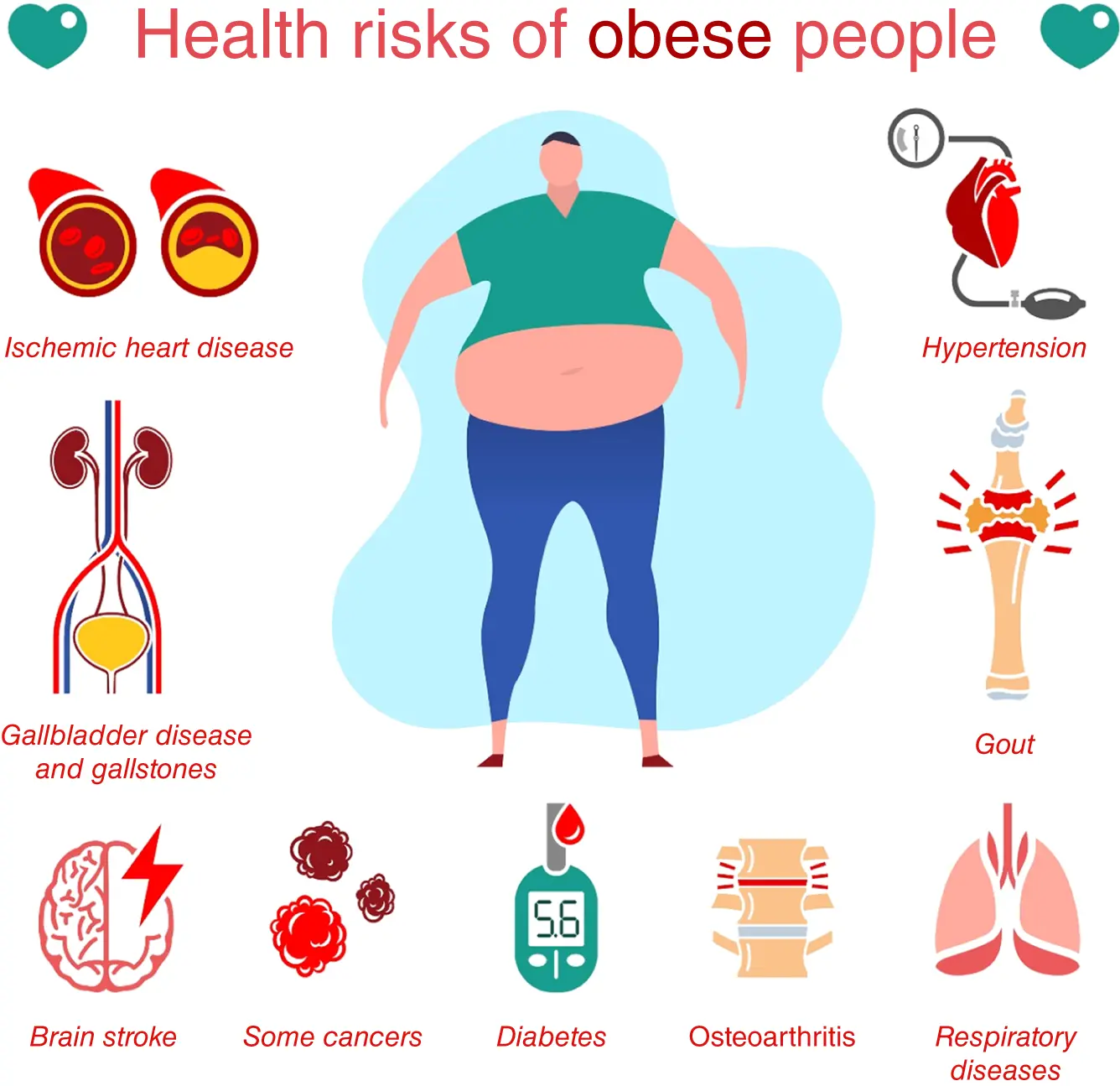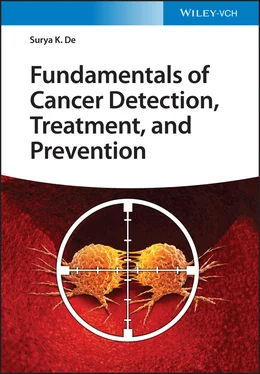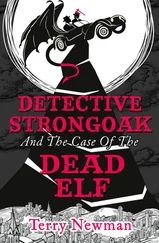Transplant recipients have a higher risk of developing several different types of cancers, some of which are directly linked to infectious agents, and others not. The four most common cancers among transplant recipients, which develop more frequently in these individuals than in the general population, include non‐Hodgkin lymphoma (NHL), lung, kidney, and liver cancers. NHL has been shown to be associated with EBV infection.
In addition to certain viruses, infections by some bacteria and parasites can cause cancer or increase its likelihood ( Figure 2.2). Viruses can disrupt the cell signaling network that normally controls cell growth and proliferation. Several of these infectious agents can also cause chronic inflammation that may lead to the development of certain types of cancers.

Figure 2.2 Cancer‐causing pathogens: Helicobacter pylori, hepatitis B virus (HBV), hepatitis C virus (HCV), and human papillomavirus (HPV).
2.4 Chronic, Long‐term, DNA‐damaging Inflammation
Inflammation is part of the body's response to injury or infection, a way of protecting damaged tissue so that healing can ensue. Signs of inflammation vary depending on where they occur. Inflammation can be acute (diminish relatively quickly) or chronic. Long‐term or chronic inflammation can result from certain conditions, including rheumatoid arthritis, asthma, periodontitis, active hepatitis, ulcerative colitis, or even obesity. Unfortunately, chronic inflammation can damage DNA and thus lead to a higher risk of cancer.
2.5 Being Overweight/Obese
People who have excess fat on their body may have an increased risk of many types of cancer ( Figure 2.3), including cancers of the breast (in postmenopausal women), colon, rectum, endometrium (lining of the uterus), esophagus, kidney, pancreas, and gallbladder [16–18].

Figure 2.3 Cancers and other diseases related to being overweight.
Reducing the risk of these types of cancers involves eating a healthy diet, being physically active, and maintaining a healthy weight (BMI). Practicing these beneficial habits also lowers the risk of other diseases like heart disease, type 2 diabetes, and high blood pressure. Another positive effect is the reduction of depression that comes about with responsible self‐care.
Lowering cancer risk through healthy eating is a form of prevention not only of cancer but also of many serious physical and mental issues. In modern societies, it is entirely possible to adjust one's diet to include many more vegetables, fruits, whole grains, and other fiber‐rich foods ( Figure 2.4). Protein sources can be found in fish and certain vegetables, and these are preferable over animal sources.

Figure 2.4 Healthy foods.
Healthy, cancer‐fighting choices include the following:
Broccoli, cauliflower, fresh peas, spinach, brussels sprouts, lettuce, tomato (fresh, no salt added), garlic, ginger, edamame, bok choy, onion, kale, cabbage, green beans, asparagus, radish, leek, beet, avocado, cucumber, bell pepper, eggplant, okra, zucchini, cilantro, lime, lemon, carrot, squash, sweet potato (limit amount), moringa leaf, and bitter melon.
Orange, grapefruit (basically, all citrus fruits), grapes, all kinds of berries (strawberry, blueberry, acai berry, cranberry), apricot, pear, apple, plum, kiwi, cherry, papaya, mango, pomegranate, banana, guava, watermelon, cantaloupe, honeydew, peach, coconut, pineapple (no sugar added), jackfruit, lychee, cherimoya, starfruit, persimmon, and longan.
Rice (white and brown), whole grain, and lentil.
Lean chicken or turkey (small quantities and not every day), lean fish, eggs (limit quantity, not every day), tofu, bean (garbanzo bean, kidney bean, soybean, black bean, pinto bean, and navy bean with no added salt), chickpea, lentil.
Whole grain bread.
Oatmeal, bran flakes, rice, wheat, and corn (maize).
Low‐fat milk, yogurt, and low‐fat cheese.
Popcorn, hummus, whole grain chips, unsalted nuts such as peanuts, almonds, cashews, walnuts, and pistachios.
Water (minimum eight cups daily), juices (100% is best, minimize added sugar), green/black/white tea, and coffee.
Olive oil, canola oil, turmeric powder, cumin, coriander, black pepper, green chilli, cinnamon, curry leaf, fennel seed, green cardamom, mint, basil, saffron, sesame seed, and parsley.
2.7 Role of Sugar and Artificial Sweeteners on Cancer
Although there is no scientific evidence that eating sugar is a direct cause of cancer, the overconsumption of sweets often results in consuming an excess number of calories, leading to overweight and obesity. Having too much body fat is associated with many forms of cancer, as discussed previously. Doctors recommend eating nutritious and filling foods, including whole grains, vegetables, fruits, and beans, and replacing sugary beverages with low‐ or no‐calorie drinks. It is also helpful to drink lots of water to help flush any toxic chemicals from the body.
As a side note, for people who already have cancer, there is no confirming evidence that eating sugar will make their cancer worse, or that if they stop eating sugar, their cancer will shrink or disappear. However, the same precaution involving the contribution of sugar to excess body fat applies.
Regarding artificial sweeteners, researchers have done numerous studies of sugar substitutes such as saccharin (Sweet'N Low®, Sugar Twin®, and Necta Sweet®), cyclamate, aspartame (Equal®, NutraSweet®), acesulfame potassium (Sunett® and Sweet One®), sucralose (Splenda®), and neotame, and found no evidence that they cause cancer in humans. With the exception of cyclamate, all of these artificial sweeteners have been approved by the Food and Drug Administration for sale in the United States.
2.8 Role of Certain Foods and Drinks on Cancer
If possible, the intake of these types of foods should be minimal.
2.8.1 Processed Meat and Fish
According to the World Health Organization (WHO), processed meats like hot dog, ham, bacon, sausage, and some deli meats can cause cancer ( Figure 2.5). Their carcinogenic effect is related to these foods being treated in some way to preserve or flavor them, such as by salting, curing, fermenting, or smoking.

Figure 2.5 Processed foods cause cancer.
Source: Pixel‐Shot/Adobe Stock
.
Salt‐cured fish, popular in China, is high in nitrates and nitrites, which have been shown to be carcinogens in animal testing and may cause cancer in humans. These chemical compounds can damage DNA, leading to cancers of the head and neck.
Читать дальше
















